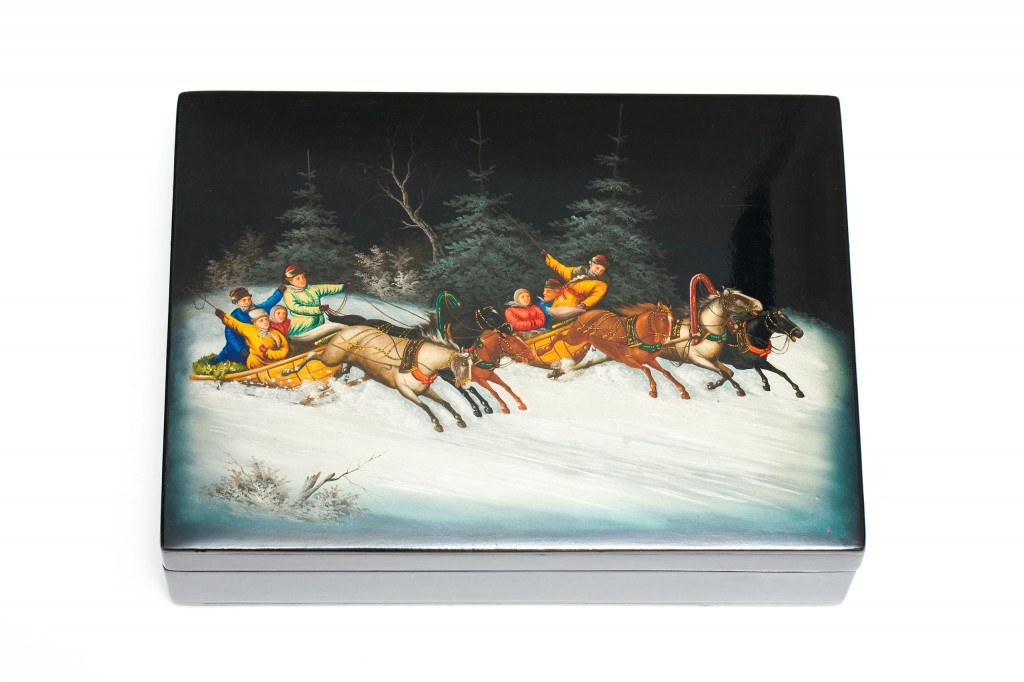Russian lacquer box

Lacquer painting on papier-mâché evolved in Russia after 1795, when the technique of making papier-mâché was brought to Russia from Germany by a Russian merchant, Piotr Korobov. Korobov established a workshop at Danilkovo, outside Fedoskino. The production of papier-mâché objects grew rapidly, and popular subjects included scenes of everyday life, portraits, reproductions of famous paintings, Russian landscapes, and images based on Russian folk and fairy tales. After the Revolution of 1917, when religious art was suppressed, icon painters turned their skills to the decoration of papier-mâché objects. Most of the Dorich House lacquerware is unmarked, but this large box, painted with a winter scene of racing troikas, carries a gold stamp that identifies it as work from Fedoskino village.

